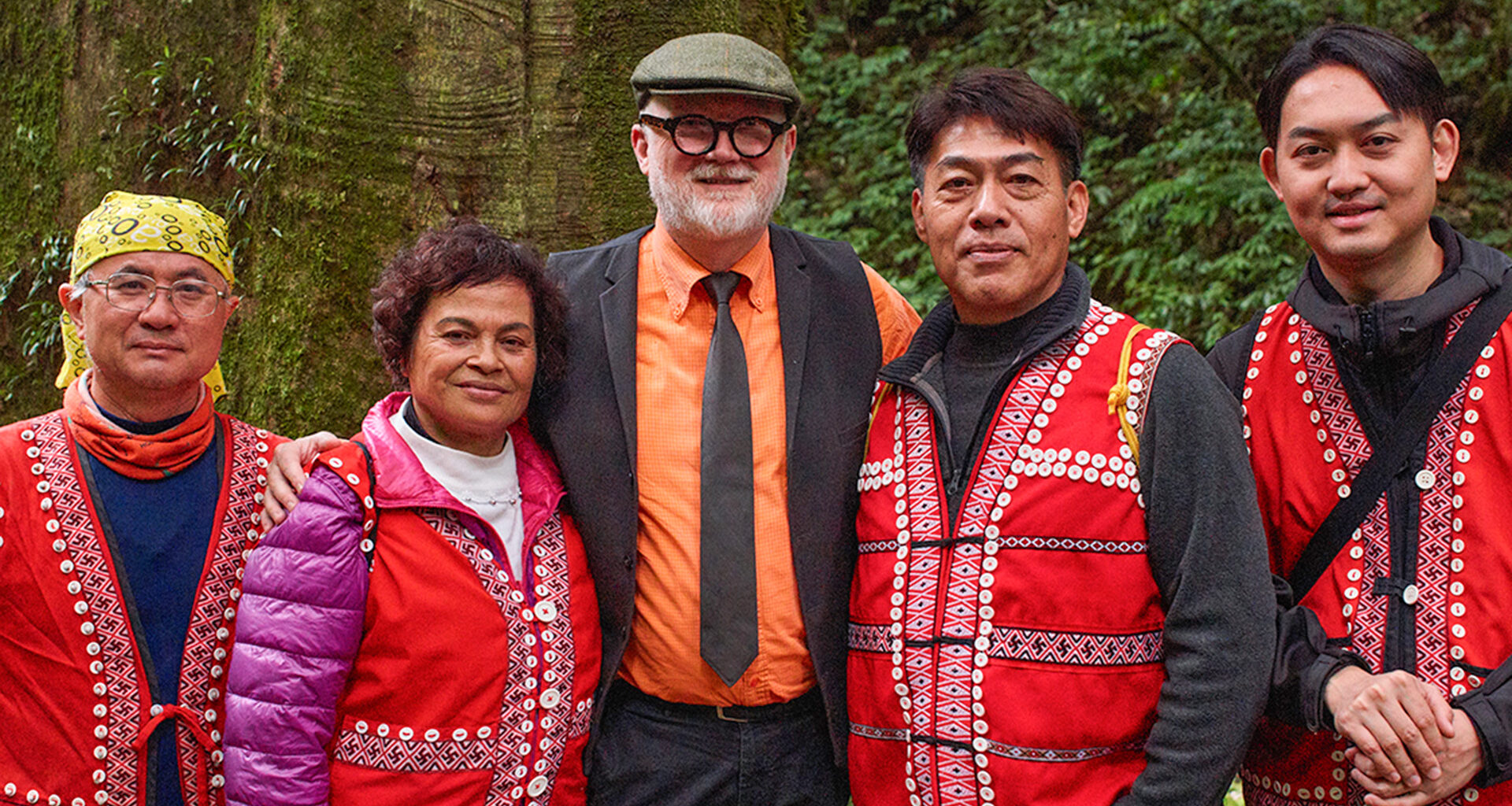So here I am, both suitably dressed in my orange and grey suit to so formality of the occasion, and arguably 100% unsuitably dressed for climbing through the moss, boulders, and snake-filled undergrowth in the forest.
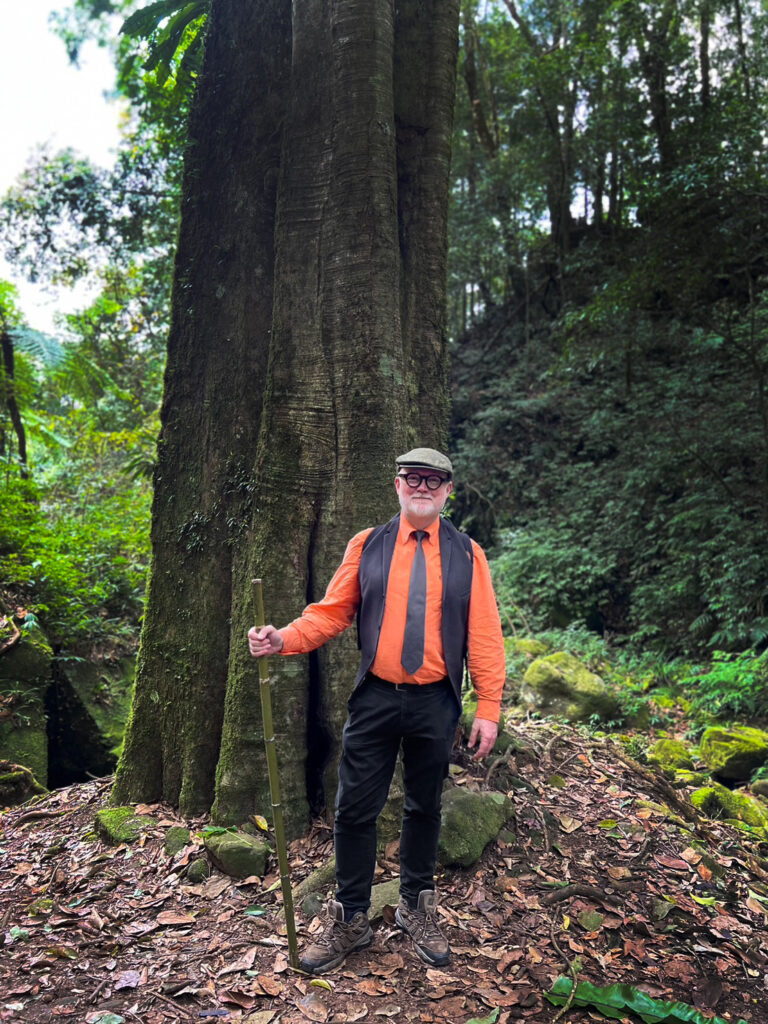
I’m in the forest just north of Nanzhuang Township in Miaoli County, about 2 hours drive south of Taipei, Taiwan, and at an altitude of about 1000 meters, at the invitation of Taiwan’s Hsinchu Branch Forestry and Nature Conservation Agency, to take part in a ceremonial planting of one of the 100 Nanzhuang Citrus Taiwanica seedlings that are being re-stablished by the Saisiyat Tribe in the Nanzhuang forests.
The weather forecast right until the night before was for heavy rain and cold in the mountains, so I’d like a kind of Paddington Bear character I’d packed a tweed hat, a huge raincoat, blue waterproof trousers, a tartan scarf, and sweater. And even that morning the weather looked potentially rough and torrential. But as we drove towards and up the mountains the weather got lighter and brighter until we stood in beautiful, dappled sunlight breaking through the mighty forest around is.
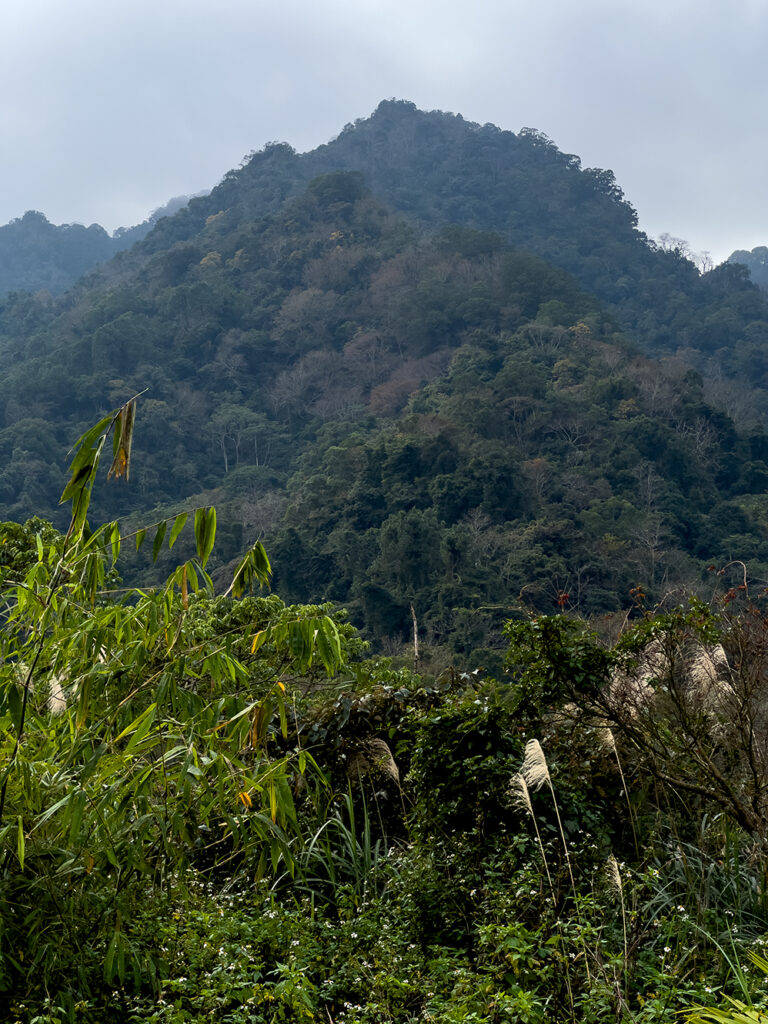
So the cars pull up and we arrive in this clearing in the forest with different levels of ground around us. Immediately I was introduced to Lin Hwa-Ching, the Director General of Taiwan’s Forestry Agency, together with Gen Zhiyou, an elder of the Saisiyat tribe, together with KeYa (one of Taiwan’s top preserve makers), and Taipei’s top young chefs, bakers and patissiers, we grabbed each other’s hands in a chain with the 40 or so Saisiyat people who had gathered to welcome us. This dance holding hands in a chain is a way of welcoming new people into the forest, and a step performed before asking the “forest spirits” to guide and protect our visit.
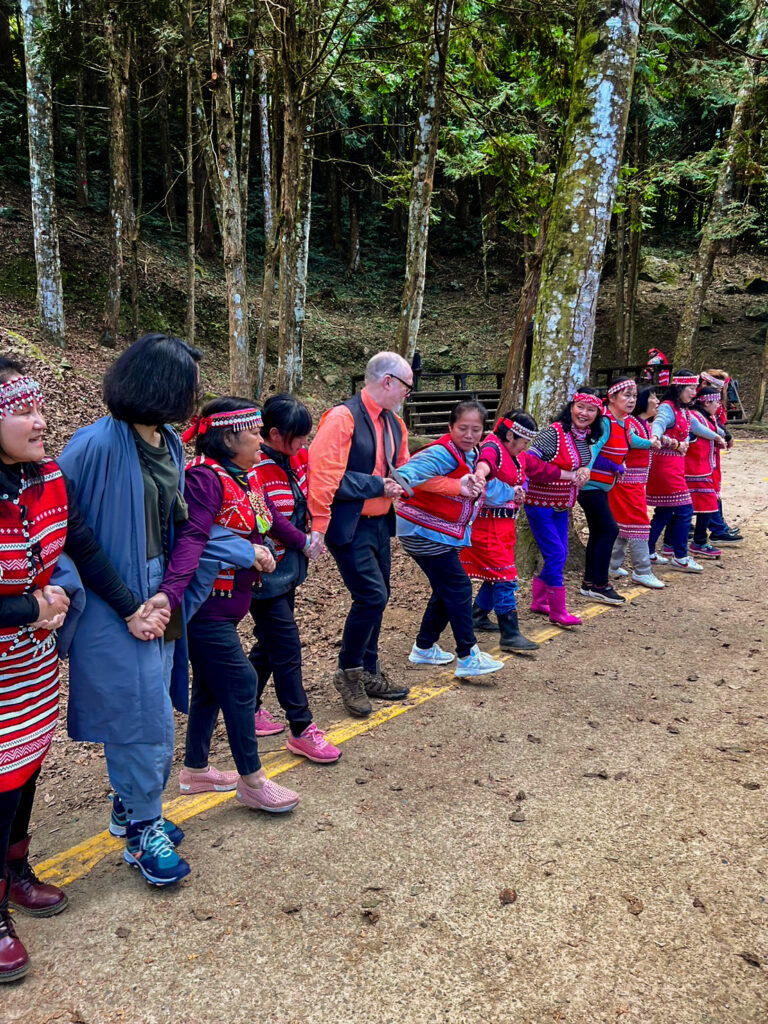
To ask for the permission and guidance of the Nanzhuang forest spirits, we each made an offering of a cooked millet paste on a square of palm leaf, cooked pork belly on a wooden skewer, and a hollowed-out stake of bamboo with one end sharply pointed and sealed, that was filled with highly-alcoholic Kaoliang spirit. Together they formed an offering we each placed in a line in front of a bamboo “gate” that was the barrier between us and the spirit world. We each said a prayer and asked silently for protection, then we went to plant the Nanzhuang Citrus Taiwanica seedling.
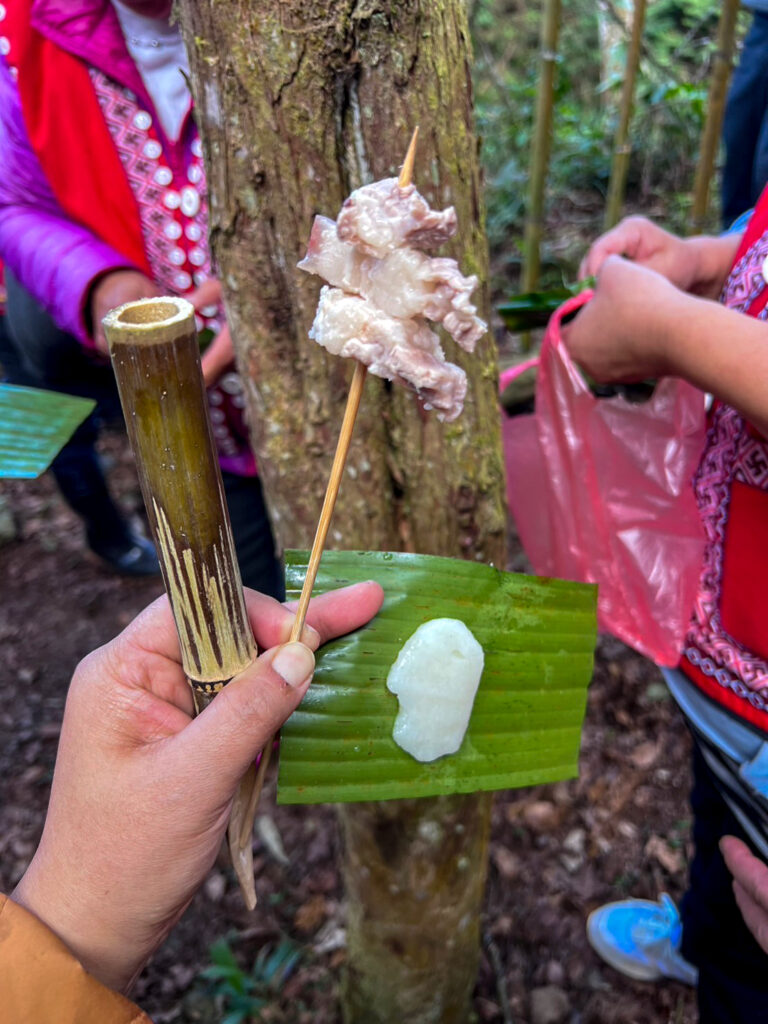
About five meters away from the makeshift bamboo temple on a slight slope towards the area where we danced, the Saisiyat elders had found the place where this particular Nanzhuang Citrus Taiwanica a seedling should be planted. So together with Lin Hwa-Ching, the Director General of Taiwan’s Forestry Agency, Gen Zhiyou from the Saisiyat tribe, we dug a hole and carefully planted the seedling, treading it in gently with our feet. The we watered it, and wished it well.

About 500 meters into the forest, climbing up over gnarled tree roots, vines as thick as your leg, and very slippery mossy rocks, we reach another bamboo gate against the side of the path. Here, our elder guide, Gen Zhiyou, places another similar offering to the forest spirits. This gate is the entrance to the sacred places among the ancient boulders in the semi-rainforest darkness, and the offering if accepted would protect us while we stumbled through it. However there’s a catch: only when you return and see that the offering has gone (i.e. eaten by something) are you assured that the spirits have accepted the offering and protected you. If, however, the offering is still staked into the ground, you must return to the forest, correct what you have done wrong, and if you can, the offering will have been accepted and you can leave.
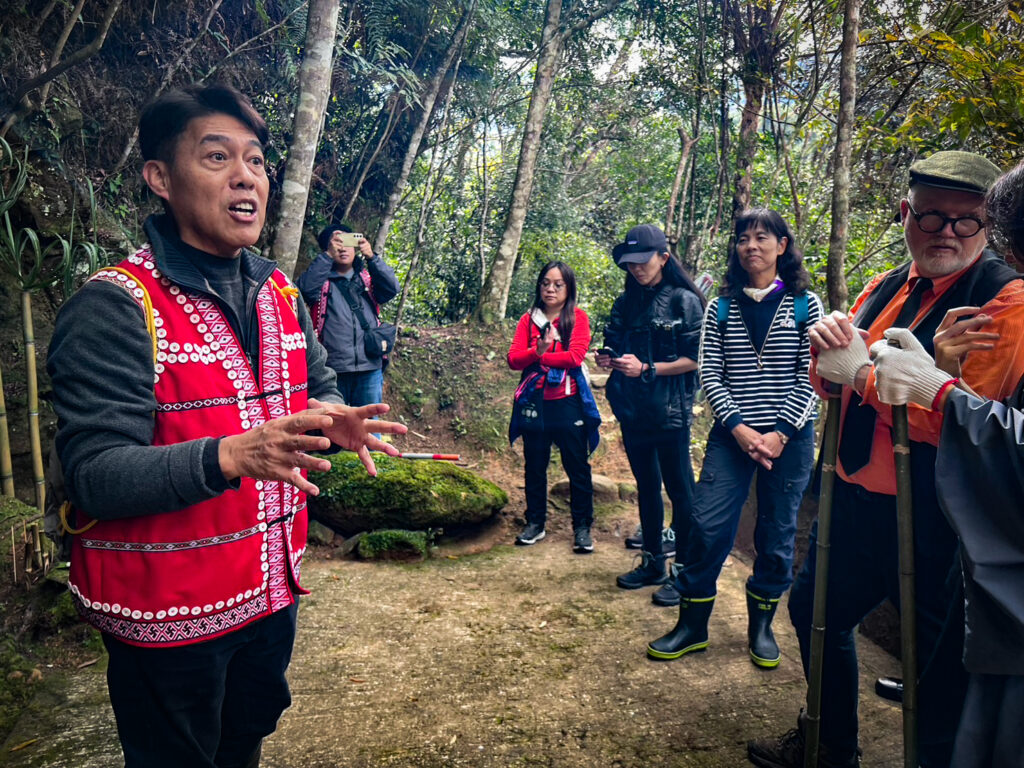
As we walked Gen Zhiyou would stop and show us how to identify edible plants that the Saisiyat would live on when hunting wild boar in the forest. He told me about a practice that young children must succeed at, a forest version of a SAT: when a child is 12 years old and fairly comfortable navigating the terrain, they are taken blindfolded into the middle of the forest, asked to count to 100, then the child removes the blindfold and navigates back to safety on their own. I’m sure the parents are watching quietly but it still must be an ordeal for both.

What’s clear is that most of the terrain was formed millions of years ago. House-sized boulders are everywhere, and as we’re near the top of the particular mountain their placement was the result of volcanic upheaval before people existed. Staghorn ferns, the sort highly prized on the black market, are growing everywhere. If you wanted to escape to an almost prehistoric peacefulness then this forest might be just what you’re looking for.

I realise as we return, finding the offering to the spirits missing (and so we’re accepted), that if the weather had been rain and storms then our trip would have been extremely difficult, perhaps impossible. As mountain weather can change rapidly and it had stayed warm and beautiful for us, I did wonder if we were indeed protected by the forest spirits. And even our overall intention: to re-establish and celebrate respectfully the return of Nanzhuang Citrus Taiwanica to the Nanzhuang forest, was hopefully a considerate move as well.

